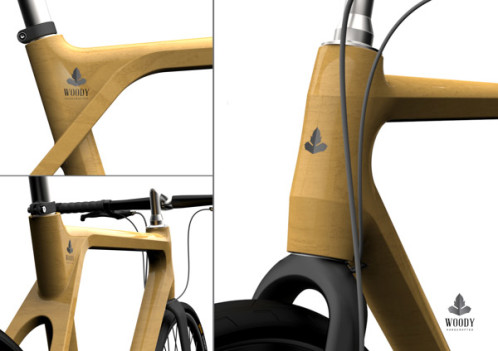 I have seen quite a few bicycle projects on the design portfolio website Behance lately, and I have been saving them into a collection on the site as I find them. Two of the designs that I noticed recently are the ones featured here by Serbian designer Milos Jovanovic. Appropriately named, “Woody” is a wooden city bike which Milos says was “inspired by retro steel frame bicycles” (perhaps he is referring to the older “triple triangle” steel GT frames). See additional renderings of the bike here on the project page.
I have seen quite a few bicycle projects on the design portfolio website Behance lately, and I have been saving them into a collection on the site as I find them. Two of the designs that I noticed recently are the ones featured here by Serbian designer Milos Jovanovic. Appropriately named, “Woody” is a wooden city bike which Milos says was “inspired by retro steel frame bicycles” (perhaps he is referring to the older “triple triangle” steel GT frames). See additional renderings of the bike here on the project page.
Milos’ eCycle (below) is an electric bike that was inspired by vintage motorcycles. The battery pack is located in a stylized “fuel tank” , which can be removed from the aluminum frame for rides where electric assist is not desired. Again, you can find additional images, and more information, on the project page at Behance.



Leave a Reply